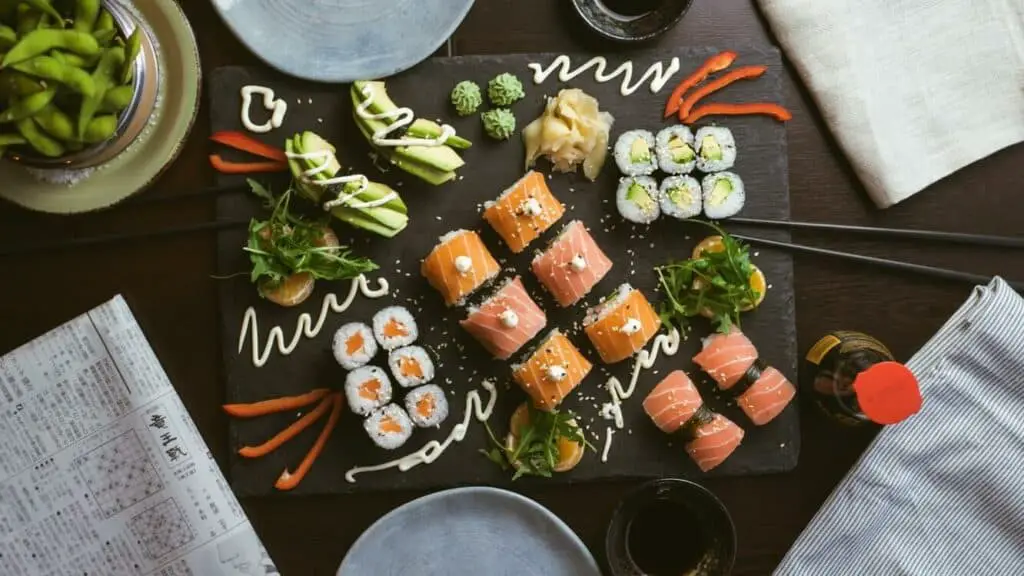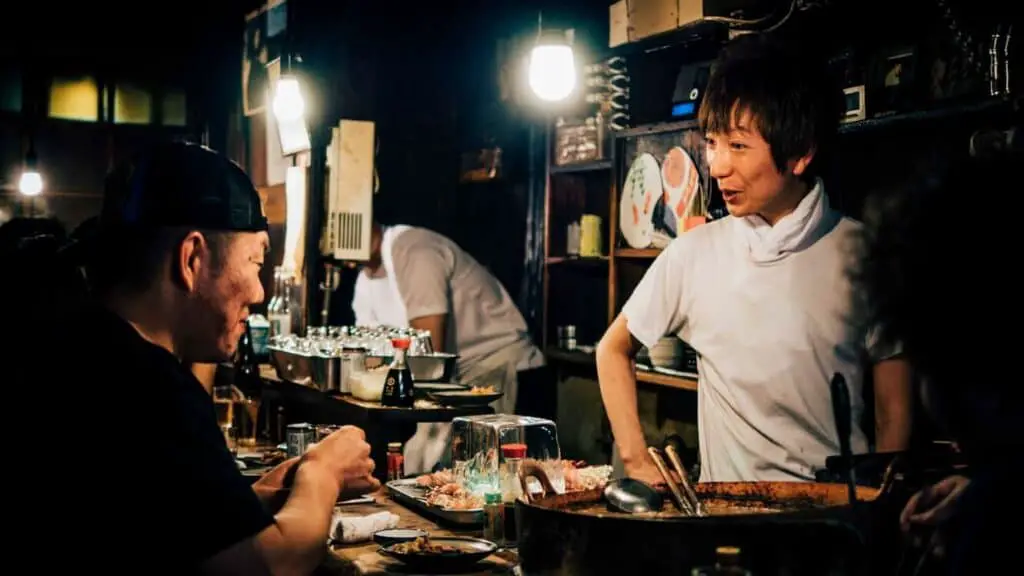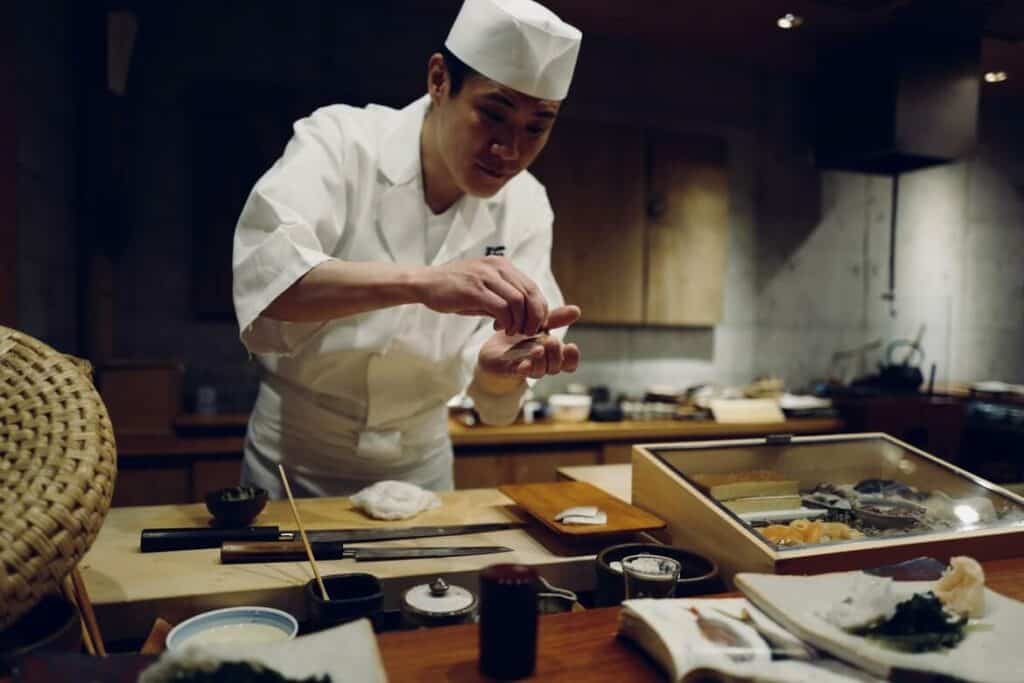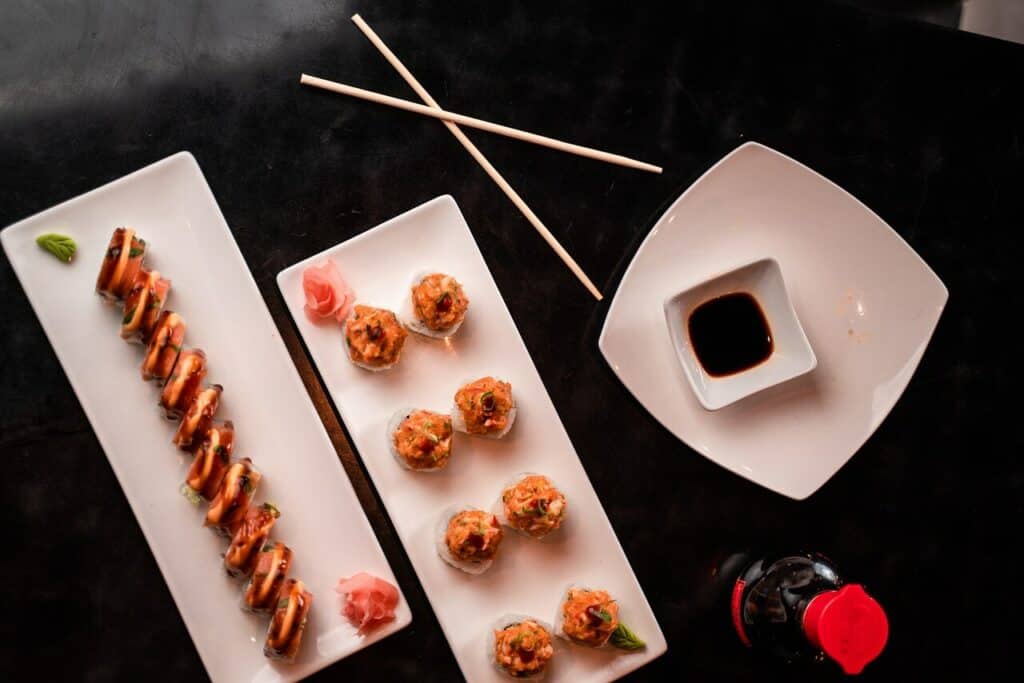Sushi has been greatly influenced by American culture, but it is also evident that it played a major role in shaping its cuisine. The origins of this fish delicacy are still debated to this day, so it’s not surprising that many people are wondering – is sushi an American or Japanese dish?
Sushi is an American dish, with most modern takes on it being developed in the US in the mid 20th century. However, it’s also undeniably Japanese, with many newer sushi styles originating from different Eastern Asian dishes and fish delicacies.


While sushi didn’t become popular in America until the late 20th century, it’s now become one of the most popular foods in the entire country, with Americans eating more than 4 billion pounds of it each year. While its origins might be debated, it is without a doubt an important part of both countries’ culinary history.
Sushi is Both an American and a Japanese Dish
No matter how surprising it might sound, modern sushi is actually an American creation. Although it did originate from a few different Japanese and Eastern Asian dishes, several types of sushi were first made in the US. This includes styles like uramaki and makizushi.
Many Americans didn’t particularly enjoy the taste of nori that was used in the Japanese norimaki. This caused a few new types of sushi to emerge in the country during the 1960s, and its popularity has only continued growing ever since.
That’s why there is a wide range of eating establishments, fitting everybody’s budget. For example, there are pricey omakase experiences as well as affordable neighborhood restaurants available to all Americans.
Keep in mind that if you opt for eating in more expensive, high-class establishments, the experience will be similar to the one you would have in Japan. But if you want to have a mix of Japanese and American cuisines, go to a restaurant that serves sushi rolls and have the best of both worlds.
What Are Some Things You Can Only Find in the American Version of Sushi?
Sushi as a dish became popular in the US and then got a life of its own. It’s fused with different flavors and produce, creating something uniquely American. While rice is a common ingredient, check out the table below to see what can be found in American sushi.
| Type of Sushi | How It’s Made |
| Fried Sushi | Rolls are deep-fried like tempura |
| Spicy Tuna Roll | Rolls are made with zesty sauce |
| Avocado Sushi | Rolls are filled with avocado and sometimes mango and strawberry |
| Sushi with Cheese | Rolls are filled with cheese |
| California Roll | Rolls are made of crab meat, mayonnaise, nori, avocado, and sesame seeds |
Wondering if sushi is Chinese food? Find out here!
What’s Sushi in Japan Like?
Eating sushi in Japan means tasting the subtle, well-balanced flavors and appreciating the freshness and purity of a single raw fish or seafood. You can expect to taste sashimi or nigiri when eating out, but never a multi-ingredient sushi roll.
When it comes to sushi restaurants in the country, they range from fine dining to low-cost conveyor belt shops. For the most part, eating sushi in Japan means going to a sushi bar and sitting at the counter, interacting with the chef, and enjoying the meal.

What Are the Main Differences Between the American and Japanese Sushi Culture?
As you can tell, Japanese and American sushi are somewhat different. Minor variations in portions, preparation, and the whole sushi culture, make each style unique. Let’s go over some differences that will make you appreciate both versions more.
How Are Sushi Chefs Different?
When it comes to food preparation, Americans and Japanese have different outlooks on sushi. For starters, sushi chefs in Japan are considered masters of their craft. They start as apprentices and make it their life’s work. A sushi chef’s job is not only to make delicious sushi but also to interact with clients. They are similar to bartenders in that they talk and learn what their clients want.
On the other hand, an American chef is merely there to get the job done. There is no lifelong goal to become a master of the profession. They don’t interact with customers, but they can be seen behind the bar preparing the food.
What’s the Difference in the Menu?
Another thing that’s very different when it comes to sushi culture is the way you order while being in the restaurant. For starters, if you are in a bar in Japan, there probably won’t be a menu. If you stumble upon one that has them, they will be in English. In Japan, rather than using a menu, you will talk with the sushi chef and order what is fresh at the moment.
When you order, go for one or a few pieces at a time rather than a whole platter. This is a smart move because rice dries out and fish oxidize once placed in front of the oven. By eating one piece at a time, you can enjoy each bite at its best.
On the other hand, the menus in America are extensive. Here it is all about what’s on the menu rather than what’s fresh at the moment. Additionally, rather than ordering a few items at a time, you will most likely order everything at once.

What Are Some Universal Sushi Etiquette?
Even though there are some significant differences in the way the food is made and consumed, there are also universal rules applied in both countries. These rules are there to allow a tastier experience for all sushi lovers:
- Avoid combining soy sauce and wasabi. This mix will reduce the strength of the wasabi taste, causing you to add more and more. Instead, it would be best to put a dab of wasabi on each bite of sushi and then dip it into the soy sauce.
- Avoid dunking the entire bite in the soy sauce, and only dab a corner into the soy sauce. This will prevent the sauce from overpowering the flavor of the sushi.
- Use pickled ginger as a palate cleanse. However, don’t place it on top of the sushi. Just eat a slice after each bite. This way, you’ll refresh your palate for the next one.
- If you’re trying to lose weight and eat healthier, order sashimi to avoid wasting calories.

No Matter Its Origins, Sushi Is Always a Good Choice
While sushi may have roots in Japan, it has become a staple of American cuisine. With its unique flavor and texture, sushi is a perfect meal for any time of day. Whether you’re looking for a quick snack or an appetizer for your next dinner party, sushi is always a good choice. So the next time you’re in the mood for something different, give sushi a try. You won’t be disappointed.